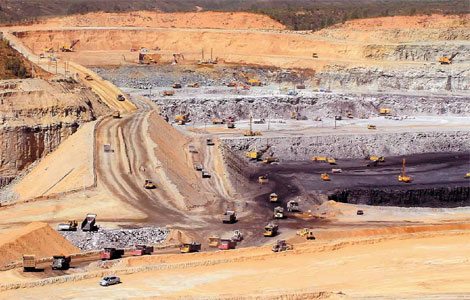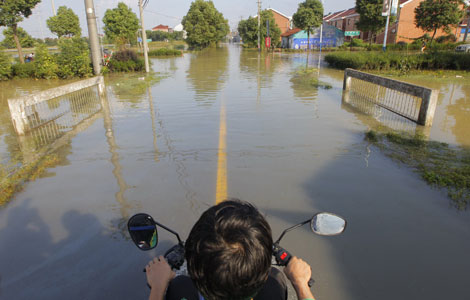Ancient Chinese built Forbidden City with stones dragged on ice
Updated: 2013-11-06 07:16
By Cheng Yingqi (China Daily)
|
|||||||||||
What's instantly noticeable about the Forbidden City, which served as the home of emperors and their households for almost 500 years since the 15th century, are the enormous white stone foundations supporting the historical site's 980 wooden buildings.
"You go to the Forbidden City and see these massive rocks and you ask yourself: 'How in the world did they ever move this rock here?'" said Thomas Stone of the department of mechanical and aerospace engineering at Princeton University, as quoted by Nature magazine.
Stone is part of a three-person team that recently discovered how. In a report published on Tuesday in the Proceedings of the National Academy of Sciences, they revealed that Chinese architects hauled the rocks from quarries in Fangshan, located 70 kilometers south of downtown Beijing, on wooden sledges along ice roads.
Li Jiang, an expert in mechanical engineering from the University of Science and Technology Beijing and a member of the team that performed the study, found ancient Chinese documents describing how people transported a 120-metric-ton rock to repair three major halls in the Forbidden City in 1557.
The ancient document, Lianggong Dingjian Ji, which translates as "the reconstruction record of two palaces", detailed how workers created man-made ice paths to transport the stone. The process was methodical: every half kilometer, wells were dug to obtain water, which was then poured onto a road and allowed to freeze to reduce the friction between the sledges and the road.
"The 49-cubic-meter rock was hauled to Beijing in four weeks. That is an average speed of about eight centimeters per second," Li said.
The scientists were amazed that ancient Chinese builders continued to use the slow, laborious method well into the 16th century, even after wheeled vehicles had been present in China for more than 3,000 years.
"When we talk about hauling in a mechanical engineering context, we often think of ancient Egyptians and Assyrians, but we do not usually refer to ancient China," Li said.
In science history publications, such as Duncan Dowson's classic History of Tribology, "the haulage of colossal statues by masses of men does not appear in any kind of ancient Chinese representation", because wheels with spokes appeared in China at about 1500 BC.
The researchers found that the ancient Chinese combination of ice paths and sledges were the safest and most efficient way to transport massive objects.
"Ancient documents until the late 16th century show that wheeled vehicles could carry a maximum load of 95 tons. So workers had to find other methods to ship the multi-ton rocks," Li said.
Sledges were also used to keep the expensive large stones from being damaged.
Studies comparing the ancient Chinese technique of transporting stone with methods from other ancient civilizations show it is more efficient to drag the sledges rather than to use wooden rollers, as the Assyrians did.
Stone said the team's calculations show that dragging the 120-ton rock with a sledge over ground that was not frozen with ice would have required a labor force of more than 1,500 people. On ice or wet wooden rails, on the other hand, it would have required 330 men. The ancient Chinese practice of hauling stone along an ice road lubricated by water would have needed fewer than 50 men.
chengyingqi@chinadaily.com.cn
Related Stories
Forbidden City bans fire sources 2013-08-15 17:46
Forbidden City to have shatterproof windows 2013-07-02 20:11
Forbidden City forbids smoking 2013-04-19 17:14
Today's Top News
Expats disobeying courts to be barred from leaving
Pollution 'to ease in five to 10 years'
Report highlights smog effects
Factories going green, efficient
Govt to focus on better service
Luxury shoppers get more sophisticated
Li urges farmers to plant more in 2014
Xi calls for targeted policies to fight poverty
Hot Topics
Lunar probe , China growth forecasts, Emission rules get tougher, China seen through 'colored lens', International board,
Editor's Picks

|

|

|

|

|

|





